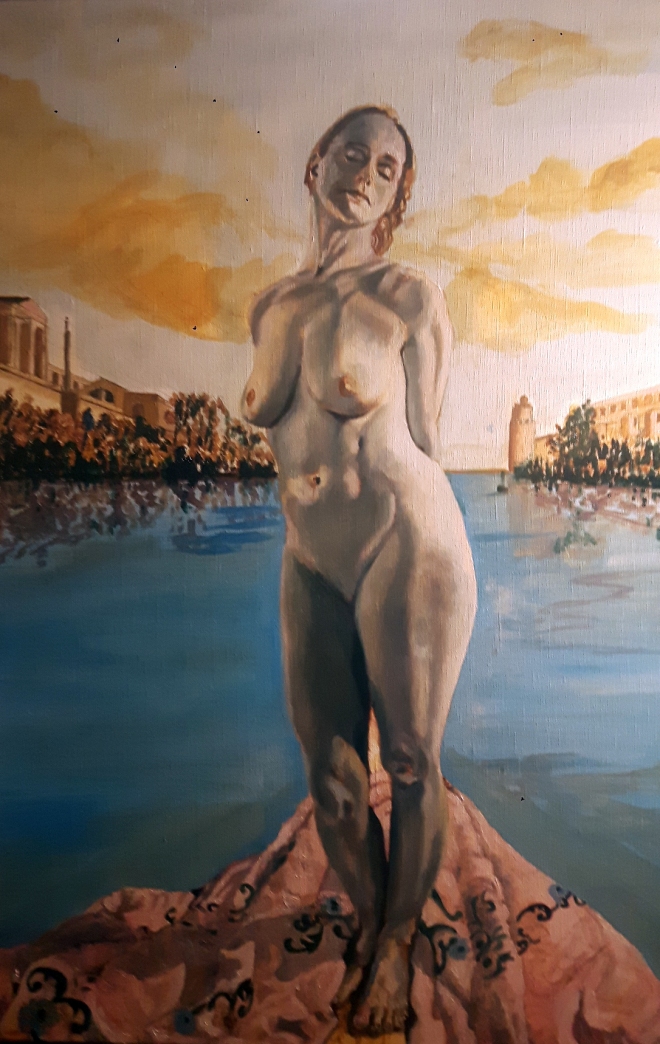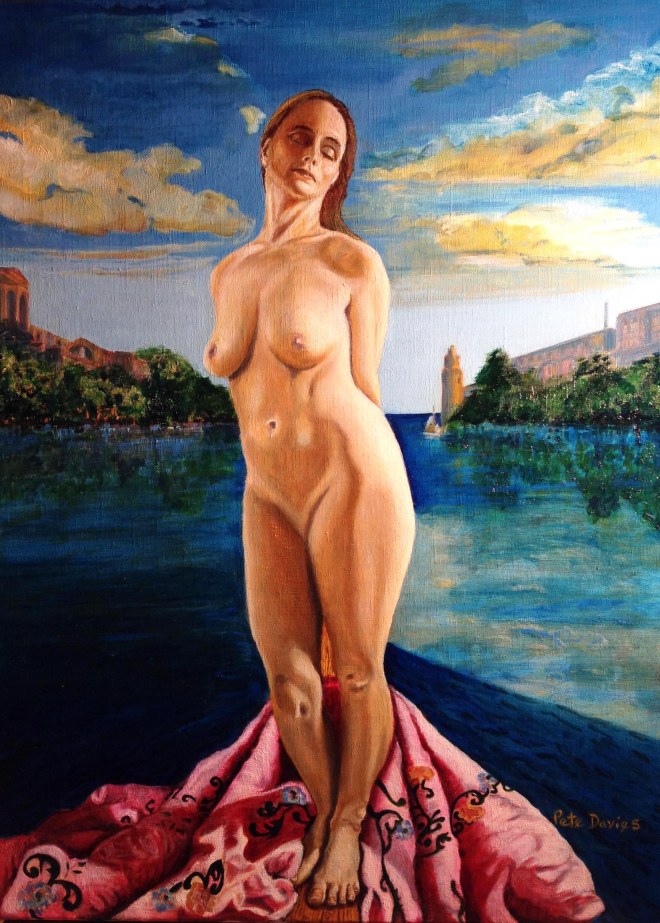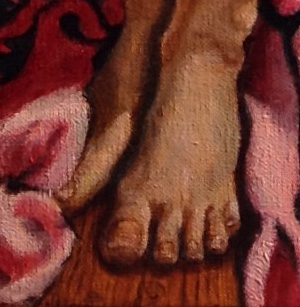1.The Drawing
The 7 layer technique that I tend to use was the method used by the Flemish painters from around the 15th Century onwards, such as Van Eyck. The idea is to build up a number of transparent layers so that the viewer can see through the painting back to the original first layers in the same way that a stained glass window is produced. The initial layer is drawn, usually in charcoal. I used an HB pencil as recommended to me by my friend, the artist Phillip Dunn. Because I tend to be quite messy. A hard pencil is best otherwise I tend to smudge the drawing. I then fix it using a spray on fixative. Not very 15th Century so far, but this is the Pete Davies version of 7 layered painting!
2. Imprimatura

Next I add the first layer, the imprimatura which I apply using light ochre and paint solvent only. This I use to establish the background, the image and a general idea of the where the tonal variations are. That usually dries pretty quickly so within a few hours I can start the next layer.
3. Under Painting

As you can see from the image above, I have used Burnt Umber to map out the monochromatic light and dark areas on the picture, I added a small amount of Prussian Blue to the areas of the body where the blood and veins would show through. This layer is called the under painting because it is a layer which forms the base on which other layers are applied. At this stage I haven’t used in linseed oil as my medium, just paint solvent.
4. The Dead Layer

This layer I believe is named after the fact that it is painted in neutral greyish tones, (Grisaille) producing an image that looks as if the subject is dead. I used Lamp Black and Titanium White although the original Flemish painters would have used Lead White in the 7 layer technique. If I remember correctly, I didn’t use any medium when applying the paint to the body. Instead I took as much oil out of the paint as I could by squashing it on sheets of paper. I used a hard brush to rub this into the areas I’d already established with the Burnt Umber. As you can see, I am starting to build up my layers, the Burnt Umber is still visible.
The fact that I’ve now added white means that I will have to wait 3 or 4 days for the paint to dry. As I am an impatient painter who has exhausted all the box sets on Netflix, to save time, I added a layer of thin glaze over the sea and the cloth. I’ve also added green to the foliage around the buildings.
5. First Colour layer

I’ve now started to add more colour. This is where the alchemy starts. I’ve glazed the cloth around her feet using a mixture of Flemish Siccative medium, Chinese Vermillion and half a crocodile (optional). Only joking about the crocodile, the rest is true. At this stage I was still undecided as to what colour the cloth should be. It was originally a white bedspread.
6. Second Colour Layer

I have now started building up areas of glaze over the whole painting. I’ve also thinned out the clouds as they were too overpowering, I thought. I’ve also added Titanium White mixed with Light Ochre to unite the skin. Again I didn’t use any oil but instead scumbled the paint on with a dry brush.
7. Further Layers of Glazing

In the finished image of my painting, titled: Sailing From Byzantium,’ you can see how I’ve glazed the sea and cloth and added a glaze this time to the girl’s body.
8. Detail

Lastly painted in the final details such as the hair and feet.
You can see more of my paintings by visiting www.petedaviesart.com
